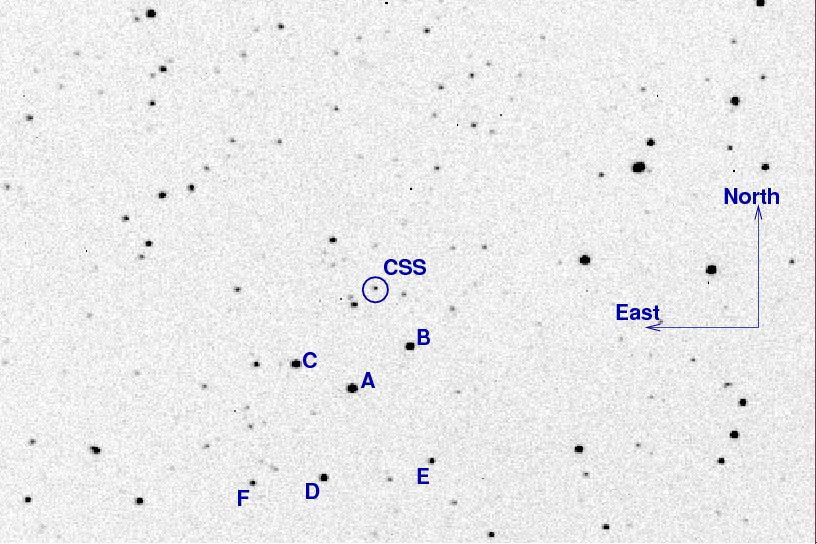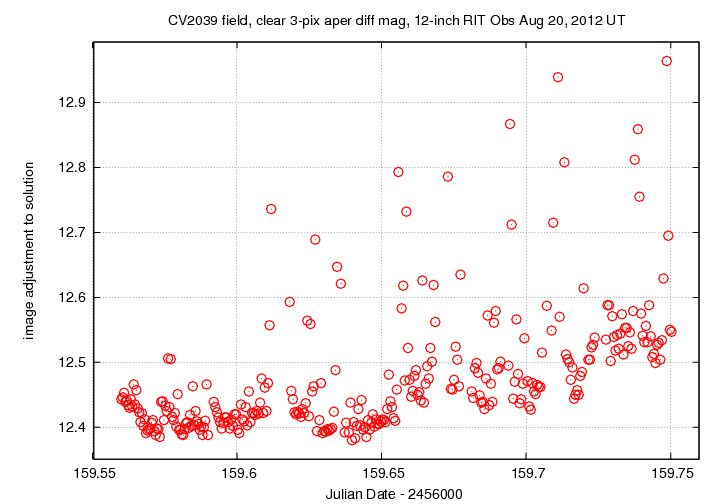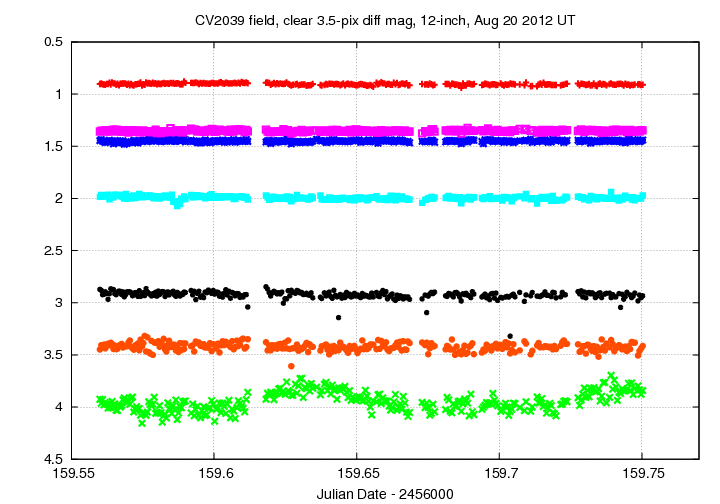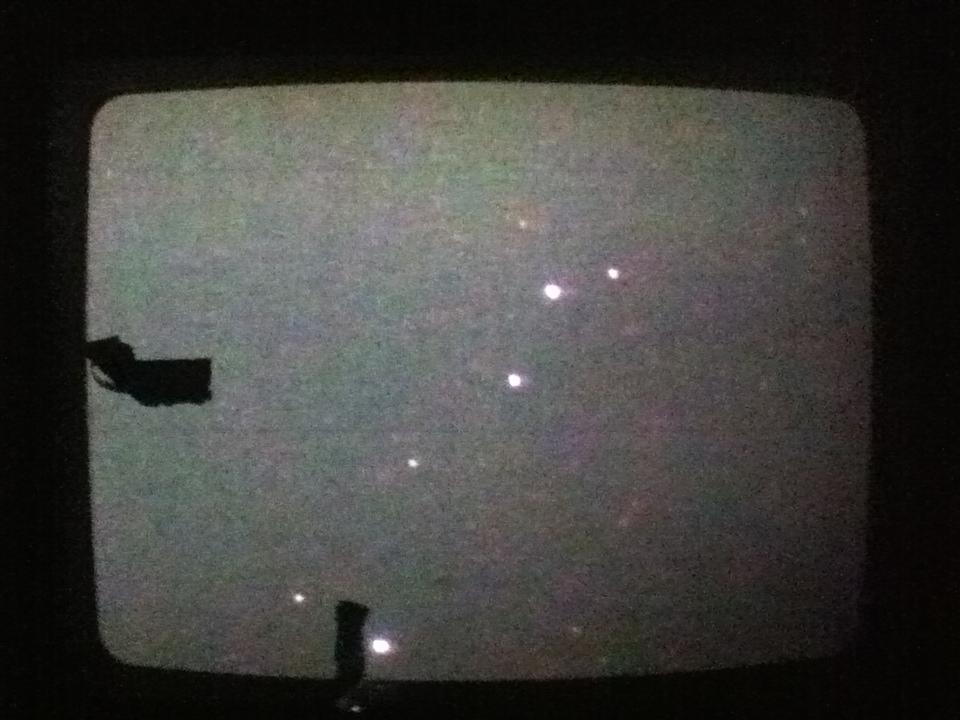
On the night of Aug 19/20, 2012, I observed the variable star CSS 203938-042908 , a cataclysmic variable star recently discovered by the Catalina Sky Survey.
The setup was:
Notes from the night
This is a chart of the field of CSS203938-042098, based on a 30-second exposure taken during the night. The field of view is about 14 by 10 arcminutes.

The AAVSO provides magnitudes for a number of stars close to the variable star -- see their web site's Variable Star Plotter (VSP). I'll use the star marked "B" above to set the instrumental (unfiltered) magnitude scale to be approximately equal to "V". According to the AAVSO,
Label AUID RA Dec AAVSO B V ----------------------------------------------------------------------- B 000-BKQ-175 20:39:35.08 -4:30:16.3 131 13.692 13.072 -----------------------------------------------------------------------
The overall sensitivity of the unfiltered CCD, telescope, etc., is probably not too far from that of the V-band. I measured instrumental magnitudes for stars in each individual image using simple aperture photometry with a radius of 3.5 pixels = 6.5 arcseconds and sky defined by an annulus around each star. Following the procedures outlined by Kent Honeycutt's article on inhomogeneous ensemble photometry, I used all stars available in each image to define a reference frame, and measured each star against this frame.
The difference between the mean instrumental magnitude of star B and the AAVSO V-band measurement was used to shift the instrumental magnitude scale to an approximation of the V-band scale -- but remember that the observations are unfiltered,
The night wasn't a great one, as this graph of the image-to-image zeropoint offset shows. A clear night should show a nearly horizontal line. Clouds appear as increases in the value of the zeropoint.

Here are light curves of the target star (green crosses) and some of the other stars in the field.

The target CSS203938-042908 goes through about one-and-a-half cycles during the observations. The scatter in the measurements is pretty big, about 0.05 magnitudes. I will have to use longer exposure times if I observe this star in the future.
I sent a message to cba-data with the following report. This shows only the first few lines of measurements -- the full set can be retrieved using the link below.
# Measurements of CSS203938-042908 made at RIT Obs, Aug 20, 2012 UT, # in mediocre conditions, # by Michael Richmond, using 12-inch Meade and SBIG ST-8E CCD. # Exposures 30 seconds long, no filter. # Tabulated times are midexposure (FITS header time - half exposure length) # and accurate only to +/- 1 second (??). # 'mag' is a differential magnitude based on ensemble photometry # using a circular aperture of radius 6.5 arcseconds. # which has been shifted so AUID 000-BKQ-175 has mag=13.072 # which is its V-band magnitude according to AAVSO. # # UT_day JD HJD mag uncert Aug20.06000 2456159.56000 2456159.56546 15.548 0.056 Aug20.06047 2456159.56047 2456159.56593 15.586 0.058 Aug20.06095 2456159.56095 2456159.56641 15.550 0.056
I have sent this data to the Center for Backyard Astrophysics via E-mail.
When the telescope is pointing at CSS 203938-042908, the finder screen should look like the picture below: North is up, East at right, field of view is about 60 x 45 arcmin.

The brightest star at upper right is HIP 101827 = HD 196527, at mag V = 6.92. The bright star at the bottom of the screen is HIP 101911 = HD 196676, at mag V = 6.45. The faint star above and to the left of HD 196527, near the top of the screen, has magnitude Vt = 10.0, while the stars of intermediate brightness in the lower portion of the screen are around Vt = 8.8.
Last modified 08/20/2012 by MWR.